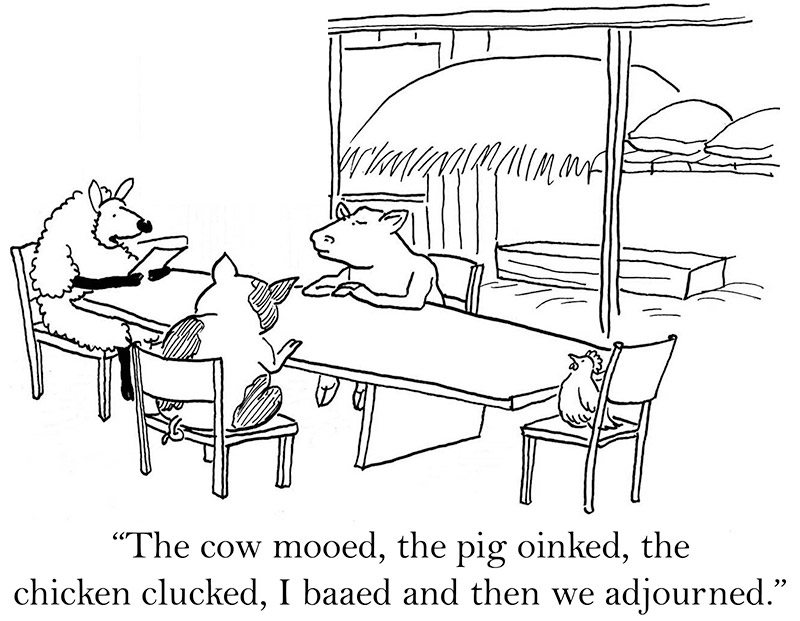Taking excellent meeting minutes requires a special set of skills. You need to be organized. You need to process information quickly. And you need to be prepared.
Great meeting minutes perfectly summarize key points of the discussion. They serve as tangible and permanent documentation of what is said and done in a meeting.
And while taking notes may seem like a tedious and boring job, it can be an art form. One that gets you noticed by the C-suite.
Has the task of taking meeting notes fallen in your lap? Here’s how to set yourself up for success.
Why take meeting minutes?
There are several reasons why you should:
- Meeting minutes are historical references that record accomplishments, decisions made, and agreed outcomes.
- They serve as a reminder of assigned tasks and proof of deadlines.
- Your company could use minutes as legal documents in employee disciplinary procedures. Or summon the minutes in court as written evidence.

Good minutes vs. bad minutes
Good meeting minutes
Good minutes should provide background information for future meetings on the same topics. It is important to note, though, that they’re not a substitute for a verbatim record. As such, minutes should be concise and clear. Anyone should be able to get the gist in a few minutes.
Also, they should be easy to follow. You should format your minutes so they’re easy to skim and pull information from a month or even a year from now.
Bad meeting minutes
Have you ever read meeting minutes that lack vital information? That can be almost as bad as not writing minutes altogether. When you can’t remember the assignees or deadlines attached to tasks, you lose accountability. You not only waste precious resources. You may end up meeting and discussing the same agenda again. And that slows progress and frustrates the team.

Download Our Free Template
Use this template to quickly & easily take meeting minutes in Microsoft Word.
Taking meeting minutes – a step-by-step guide
Record-taking is a tough responsibility.
You must choose what to include—and what to skip—in the minutes. so that you produce a reliable record.
Here are some tips to help you write meeting minutes with ease and accuracy.
- Before the Meeting
- Agenda. Check the agenda and gather as much information about the meeting as you can. Ask the meeting lead for a list of attendees. Ask him or her to include some information on the purpose of the meeting. These will allow you to follow the discussion while you are recording notes.
- Participants. Have the names of all meeting participants before the meeting begins. If this is not possible, pass around an attendance sheet as the attendees arrive. Ask the host to introduce you to those you are not familiar with so you can record assigned tasks and decisions.
- Recording medium. Choose how you’ll take notes before you arrive. For some, pen and paper will suffice. If you’re more comfortable using a laptop or a notes-taking app, that is okay, too. Just make sure you have a backup ready. Prepare a tape recorder or even a notes app on your smartphone, for example. You want to come prepared in case your primary note-taking device malfunctions.
- Meeting template. Consider creating a template, since meetings usually follow a consistent format. A template can save you time as you only need to fill in the blanks for standard information.
What to include
Robert’s Rules of Order, a meeting guide created by Henry Martyn Robert, lists 10 things to include in formal meeting minutes:
- Name of the organization and the nature of the meeting, such as emergency, annual, general, regular, or a special meeting specific to a single issue.
- Time, date, and location of the meeting.
- Names of the attendees – including those who were expected to attend but were absent, if required
- The moderator’s name and at what time the meeting was called to order.
- Whether or not the minutes of the previous meeting were read, and if they were, whether they were approved or not, or approved with revisions.
- Summaries of any report or presentation. Include actions taken, if any, such as approval, endorsement, acceptance, or referral.
- A discussion summary of each agenda item and any other issues discussed.
- A record of formal motions, plus the name of the individual who made the motion.
- If voting was done, take note of all motions, including the number of for and against votes, as well as the number of abstentions.
- The time the meeting was formally ended.

2. During the meeting
As already mentioned, there’s no need to write every spoken word during the meeting. Instead:
- Focus on the key items such as decisions and action plans.
- Write these down as discussed, and do not hesitate to ask the meeting lead for clarifications.
3. After the meeting
- Before writing the actual meeting minutes
If necessary, write more comments when reviewing your notes. Make it a goal to complete the meeting minutes soon after the meeting ends, within 24 to 48 hours. This ensures that everyone remembers their action items. And it summarizes key discussion items for those who were unable to attend.
- When writing the meeting minutes
Keep your notes impersonal. Speakers are generally not identified in the minutes, unless they’re making or seconding motions. The record should show a collective action, and not what each attendee said. This ensures that your summary of the discussion is objective.For example, instead of writing: “Mr. Smith thinks that half of the funds should go to IT infrastructure to keep up with the pace of today’s technological evolution. He argues that the Board ignores this aspect in favor of other projects.” You might record: “It was suggested that half of the funds be devoted to IT infrastructure to keep up with the pace of today’s technological evolution.” Use neutral and positive language – however impassioned the discussion. This improves communication and keeps the minutes credible and respectable. - After writing the meeting minutes
When you’re finished, ask the meeting lead to check your minutes for errors. Once approved for dissemination, send the final copy to attendees right away. Remember to keep a copy of your notes should anyone need to review them at a later time.
Final word
Memories are unreliable. Key decisions need to be tracked so that required actions are performed within the agreed-upon timeframe. Be prepared to step up to the plate and take excellent minutes. You’ll be remembered for it.







